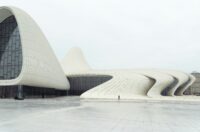- Home
- Articles
- Architectural Portfolio
- Architectral Presentation
- Inspirational Stories
- Architecture News
- Visualization
- BIM Industry
- Facade Design
- Parametric Design
- Career
- Landscape Architecture
- Construction
- Artificial Intelligence
- Sketching
- Design Softwares
- Diagrams
- Writing
- Architectural Tips
- Sustainability
- Courses
- Concept
- Technology
- History & Heritage
- Future of Architecture
- Guides & How-To
- Art & Culture
- Projects
- Interior Design
- Competitions
- Jobs
- Store
- Tools
- More
- Home
- Articles
- Architectural Portfolio
- Architectral Presentation
- Inspirational Stories
- Architecture News
- Visualization
- BIM Industry
- Facade Design
- Parametric Design
- Career
- Landscape Architecture
- Construction
- Artificial Intelligence
- Sketching
- Design Softwares
- Diagrams
- Writing
- Architectural Tips
- Sustainability
- Courses
- Concept
- Technology
- History & Heritage
- Future of Architecture
- Guides & How-To
- Art & Culture
- Projects
- Interior Design
- Competitions
- Jobs
- Store
- Tools
- More
Writing About Architecture: Tips for Crafting Engaging and Insightful Narratives
Discover the art of writing about architecture, where storytelling meets design. This article explores how to translate spatial experiences into compelling narratives, bridging technical concepts and human emotions.

Writing in architecture is more than describing buildings; it’s about capturing the essence of spaces and how they shape our lives. Architecture tells stories through design, blending aesthetics, function, and history. As writers, we have the unique challenge of translating these visual and spatial experiences into words that resonate with readers.
Whether we’re exploring iconic landmarks or modern innovations, our words can bring structures to life, highlighting their cultural significance and emotional impact. By focusing on details like materials, light, and form, we can create vivid narratives that connect people to the built environment. Writing about architecture isn’t just technical—it’s an art form that bridges design and storytelling.
Table of Contents
ToggleImportance Of Writing About Architecture
Writing about architecture enhances our understanding of the built environment by bridging the gap between technical design and human experience. It transforms architectural concepts into accessible narratives that reveal their societal relevance and cultural context.
Architectural writing preserves the legacy of structures by documenting their historical, aesthetic, and functional significance. For example, writings on the Parthenon or Le Corbusier’s works ensure their narratives persist for future generations. This practice captures the philosophical underpinnings and evolving interpretations of these designs.
It influences public engagement by fostering appreciation for design’s role in daily life. Articles or critiques on urban planning projects, like sustainable housing, encourage discourse on how architecture shapes communities and addresses modern challenges.
Architectural writing also supports professionals by translating complex design principles into relatable content. Designers and planners use these insights to convey ideas to a broader audience, ensuring their projects are understood and valued.
By highlighting the interplay between form, function, and emotion, we can educate readers on appreciating the spatial and symbolic dimensions of architecture. Examples like Gothic cathedrals demonstrate how material, light, and scale combine to evoke spiritual and emotional responses.

Key Skills For Writing About Architecture
Writing about architecture requires a set of specific skills that combine technical understanding with the ability to engage readers. These skills enable us to translate complex architectural concepts into accessible and compelling narratives.
Architectural Knowledge
A strong foundation in architectural principles enhances the depth of writing. We need familiarity with design theories, historical movements (e.g., Modernism and Renaissance), construction techniques, spatial relationships, and material characteristics. Recognizing details like how Gothic elements use verticality or how Brutalism employs raw concrete adds authority to our work. Without this knowledge, effectively bridging technical design with human experience becomes challenging.
Clear Communication
Effective writing connects technical details to readers in a way that’s both accurate and engaging. We focus on creating concise descriptions, avoiding jargon that alienates those outside the field, and structuring content logically. For example, instead of using “fenestration,” we explain “the arrangement of windows to bring light into a space.” Keeping language approachable ensures our writing appeals to professionals and non-experts alike.
Analytical Thinking
Analyzing architectural elements critically allows us to explore their broader significance. We examine how design impacts human emotion, functionality, or cultural identity, such as how curved forms can evoke softness or how urban layouts influence movement. Identifying relationships between architectural intent and societal relevance sharpens our narratives, encouraging readers to reflect on the built environment’s role in everyday life.
Understanding The Audience
Audience awareness is a fundamental aspect of writing about architecture. Our readers come from diverse backgrounds, including professionals, enthusiasts, and the general public, each with varying levels of familiarity with architectural concepts. Understanding these distinctions helps us tailor content that resonates with different groups.
- Professionals
Architects, designers, and industry experts seek detailed analyses and insights. Addressing advanced topics like design philosophies, construction methods, and innovative technologies ensures engagement. For example, exploring sustainable materials or parametric designs offers value to this audience.
- Students and Enthusiasts
Architecture students and design enthusiasts often look for educational and inspirational content. Breaking down complex ideas, such as the principles behind Bauhaus or Brutalism, can help them deepen their understanding while fostering their passion for the field.
- General Public
The wider audience values relatable narratives that explain architecture’s role in daily life. Highlighting stories behind iconic structures, such as the Eiffel Tower, or guiding readers through the cultural significance of urban landscapes makes the subject accessible and intriguing.
Recognizing these audience segments allows us to create balanced writing. By interweaving technical depth with relatable narratives, we ensure our content appeals to both specialists and non-specialists without alienating any group.

Methods To Approach Writing About Architecture
Effective approaches to writing about architecture require combining thorough research, deliberate structuring, and a balance between technical precision and creative expression. Each method plays a pivotal role in crafting engaging and informative architectural narratives.
Research And Observation
Gathering insights through research and observation forms the foundation of architectural writing. Exploring diverse sources such as architectural journals, case studies, and technical reports ensures accurate and well-rounded content. Observing structures on-site helps us capture spatial dynamics, materials, and the interplay of light in context. Documenting firsthand details, like the texture of stone façades or how space impacts movement, enriches descriptions. Engaging with architects or local communities during the observation phase contributes nuanced perspectives that written accounts alone might miss.
Structuring The Content
A well-organized structure makes architectural writing cohesive and accessible. Introducing the subject with a strong thesis contextualizes the work in its historical, cultural, or functional framework. Dividing content into logical sections—such as design intent, construction methods, and societal impact—allows readers to navigate the piece effortlessly. Highlighting standout elements, such as innovative use of materials or unique stylistic influences, provides focal points. Incorporating a mix of analysis and storytelling connects technical details with human experience, creating a compelling narrative flow.
Balancing Technical And Creative Language
Combining technical accuracy with creative expression makes architectural writing engaging for diverse audiences. Simplifying complex terminologies ensures clarity without diluting core information. Using vivid language, like describing how ambient light shifts perceptions of interior spaces, evokes emotional connection. When presenting functional details, such as energy-efficient designs, creatively linking them to user benefits expands relevance. This balance bridges the gap between technical rigor and storytelling, allowing readers to appreciate both the details and their broader significance.

Common Challenges And Solutions
Conveying Spatial Experiences
Writing about spatial experiences involves translating three-dimensional designs into text without losing their essence. Readers may struggle to visualize abstract descriptions. We mitigate this by focusing on sensory elements like light, sound, and texture. For example, describing how sunlight streams through a stained glass window or how acoustics enhance a cathedral’s ambiance creates vivid imagery. Including diagrams or photographs can also bridge gaps in understanding.
Balancing Technicality And Accessibility
Overly technical writing often alienates general readers, while oversimplification risks disengaging professionals. Striking this balance requires tailoring content based on the audience. For instance, we provide technical details, such as cantilever designs, for architects or engineers while explaining their practical implications in simplified terms for lay audiences. Analogies, where appropriate, help clarify complex concepts without overwhelming non-specialists.
Addressing Subjectivity In Interpretation
Architectural designs evoke personal and cultural interpretations, making objectivity challenging. We approach this by combining factual details with interpretive insights. For example, specifying a material like travertine provides tangible information, while exploring its symbolism in Roman architecture adds context. Citing multiple perspectives ensures a balanced narrative, appealing to diverse readers.
Maintaining Reader Engagement
Long articles risk losing readers’ attention, especially with dense content. To combat this, we use concise sentences, subheadings, and bullet points for readability. Engaging storytelling, such as narrating the inspiration behind the Fallingwater design, captivates readers while maintaining informational depth. Integrating anecdotes or interviews adds a personal dimension that resonates with audiences.
Navigating Limited Information On Historical Architecture
Writing about historical structures often encounters gaps in documentation. We mitigate this by relying on authoritative sources, such as archives or expert interviews, to substantiate claims. For example, when discussing Machu Picchu, consultation with archaeological research enriches the narrative. Highlighting speculative elements as theories, not facts, maintains credibility.

Examples Of Great Writing About Architecture
Koolhaas explores Manhattan’s architectural evolution through an imaginative lens. He merges historical research with creative narrative, presenting the city as a “culture of congestion” driven by urban density and architectural ambition. His vivid analysis exemplifies how theoretical concepts intersect with urban development.
- “The Architecture of Happiness” by Alain de Botton
De Botton connects architecture with human emotions, addressing how buildings influence well-being. This book’s accessible prose and philosophical insights make it a standout, translating complex architectural ideas into relatable perspectives for a wider audience.
- “Complexity and Contradiction in Architecture” by Robert Venturi
Venturi critiques modernist simplicity, celebrating architectural complexity instead. His work emphasizes contradictions in design, offering detailed analyses of historical and contemporary buildings. This text exemplifies technical precision combined with reflective commentary.
- “Towards a New Architecture” by Le Corbusier
Le Corbusier advocates for functionalism and modernist principles, influencing 20th-century architecture. His language captures an ambitious vision, blending technical approaches with artistic philosophy. This manifesto shaped architectural discourse and remains a reference for innovative design thinking.
- “Why Architecture Matters” by Paul Goldberger
Goldberger bridges professional and public perspectives, discussing architecture’s cultural and emotional significance. His language balances clarity and depth, illustrating how well-crafted narratives can make architectural analysis accessible to all readers.
These works represent exceptional contributions to architectural writing, blending technical, historical, and emotional dimensions to engage diverse readers.
Conclusion
Writing about architecture demands a nuanced approach that integrates technical knowledge with creative storytelling. By emphasizing the connection between buildings and human experience, we can craft engaging narratives that reveal the cultural, emotional, and functional dimensions of architectural works. Highlighting elements like materials, form, and light enriches our descriptions while contextualizing their impact on individuals and communities.
We must also bridge the gap between technical design and accessibility, ensuring our writing resonates with diverse audiences. Incorporating sensory details, historical context, and societal insights creates a framework that fosters appreciation for both the artistry and utility of architecture. Through these approaches, architectural writing not only educates readers but also elevates the conversation about design’s role in shaping our world.
- architectural critique writing
- architectural journalism
- architectural narrative development
- architecture blog writing tips
- architecture essay writing
- architecture narrative strategies
- architecture storytelling techniques
- architecture writing tips
- crafting engaging architecture narratives
- creative architecture writing
- effective architecture communication
- insightful architecture writing
- writing about buildings
- writing architecture articles
Submit your architectural projects
Follow these steps for submission your project. Submission FormLatest Posts
How to Improve Your Blog Writing: Tools and Techniques That Work
Blog writing is challenging; despite 90% of businesses worldwide using marketing strategies,...
How Architecture Students Can Improve Their Academic Writing
There’s a special kind of chaos that lives in the studio of...
EssayWriters vs. All-Nighters: 5 Reasons to Pick the Former
Why Smart Students Choose EssayWriters Instead of Sleepless Nights That moment when...
EssayService Promo Code: Save on Reliable Academic Help
Rising tuition, expensive textbooks, unpaid internships, and endless deadlines have made college...












Leave a comment